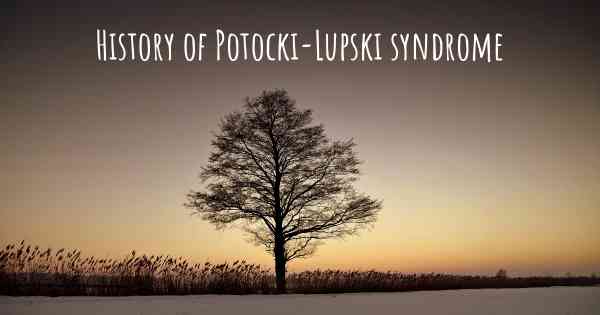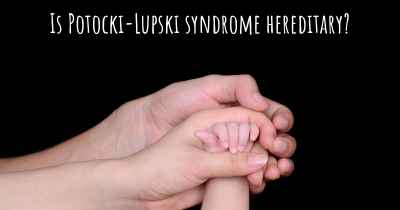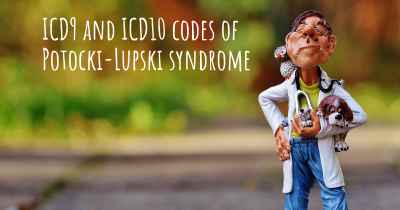What is the history of Potocki-Lupski syndrome?
When was Potocki-Lupski syndrome discovered? What is the story of this discovery? Was it coincidence or not?

Potocki-Lupski syndrome (PTLS) is a rare genetic disorder characterized by developmental delay, intellectual disability, and various physical and behavioral abnormalities. It is caused by a duplication of a specific region of chromosome 17 known as 17p11.2. The syndrome was first described in medical literature in 2007 by Dr. James R. Lupski and his colleagues, but its history can be traced back to earlier discoveries and research.
The story of PTLS begins with the identification of a genetic condition called Smith-Magenis syndrome (SMS) in the early 1980s. SMS is characterized by similar features to PTLS, including developmental delay, intellectual disability, and distinctive physical traits. In the late 1990s, researchers discovered that SMS is caused by a deletion of the same region of chromosome 17 that is duplicated in PTLS. This region is known as the Smith-Magenis syndrome/ Potocki-Lupski syndrome (SMS/PTLS) critical region.
It was not until 2007 that Dr. Lupski and his team made the groundbreaking discovery that duplications of the SMS/PTLS critical region can lead to a distinct syndrome, which they named Potocki-Lupski syndrome. The researchers identified several individuals with developmental delay and intellectual disability who had duplications of the 17p11.2 region. They observed that these individuals exhibited similar features to those with SMS, but with some differences in physical and behavioral characteristics.
The discovery of PTLS expanded our understanding of the genetic basis of neurodevelopmental disorders. It provided further evidence that alterations in the same genomic region can lead to different clinical outcomes, depending on whether there is a deletion or a duplication. This phenomenon is known as the "duplication/deletion syndrome paradigm."
Since its initial description, more cases of PTLS have been reported in the medical literature, allowing researchers to gain a better understanding of the syndrome's clinical features and variability. The characteristic features of PTLS include developmental delay, intellectual disability, speech and language difficulties, autism spectrum disorder, hypotonia (low muscle tone), and distinctive facial features such as a broad forehead and a triangular-shaped face.
Research efforts have also focused on understanding the underlying molecular mechanisms of PTLS. The duplication of the 17p11.2 region in PTLS leads to an increased dosage of specific genes, which disrupts normal brain development and function. Some of the genes within this region are involved in neuronal development, synaptic function, and signaling pathways that are crucial for proper brain development.
As PTLS is a rare disorder, its prevalence in the general population is not well-established. However, it is believed to be underdiagnosed due to its variable clinical presentation and lack of awareness among healthcare professionals. Genetic testing, such as chromosomal microarray analysis, is typically used to confirm the diagnosis of PTLS.
Treatment for PTLS is primarily focused on managing the individual's specific symptoms and providing supportive care. Early intervention programs, speech therapy, occupational therapy, and educational support can help individuals with PTLS reach their full potential and improve their quality of life.
In conclusion, Potocki-Lupski syndrome is a rare genetic disorder caused by a duplication of the 17p11.2 region of chromosome 17. It was first described in 2007 by Dr. James R. Lupski and his colleagues. The discovery of PTLS expanded our understanding of the genetic basis of neurodevelopmental disorders and highlighted the importance of the duplication/deletion syndrome paradigm. Ongoing research continues to shed light on the clinical features, molecular mechanisms, and management of this complex syndrome.








